Director of Indian Institute of Management Bangalore (IIM-B), Prof. G Raghuram, who himself studied management at IIM-Ahmedabad following a B.Tech from IIT-Madras and finishing it all off with a PhD from Northwestern University, USA. In this interview with Corporate Citizen , Prof. Raghuram traces the history of IIM- Bangalore, the directions it took over different periods based on the needs of those times, what makes its students leaders of tomorrow, equipped to face the challenges of the future, and the way forward for the institute.
“We are very committed to entrepreneurship. We have the NS raghavan centre for entrepreneurial learning (NSRCEL). Besides, we have a required mandatory course on entrepreneurship in our post graduate programme, in the first year. We encourage students who want to get into startups. If they are not comfortable with their startup, they can come back for placement”
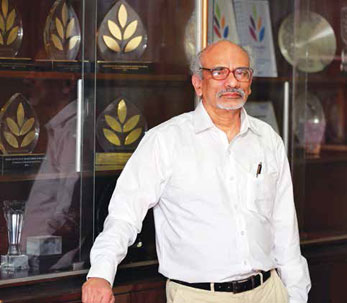
As you turn in into the gates at the 100-acre IIM-B campus, you step into a different world altogether, leaving the rush and tumult of Bengaluru’s infamous traffic behind. Inside, the verdant and peaceful environs offer a visual panorama. A little way ahead, the lush greenery gives way to majestic stone buildings, where some of the sharpest young minds in the country absorb invaluable lessons in the art and science of management are shaped and transformed into able leaders of tomorrow.
Originally established more than four decades ago to meet the demands of the public sector for which Bengaluru was so well known then, what has been remarkable about this institute is how it has remained alert to changing needs over time and evolved and adapted to them. Catering to different leadership needs, it offers various courses, of short and long duration. And so it is that it alongside the two-year flagship Post Graduate Programme (PGP) in management for young and dynamic students, it also offers courses to policy makers, mid-career and senior executives from various sectors, family business owners and women entrepreneurs through its various time-tested programmes.
And so there have been CBI officers dealing with financial crimes attending certificate programmes in financial intelligence and analytics, women entrepreneurs being mentored into incubating their own startups on the campus or members from family businesses honing their business skills, raring to go and take their businesses to the next level.
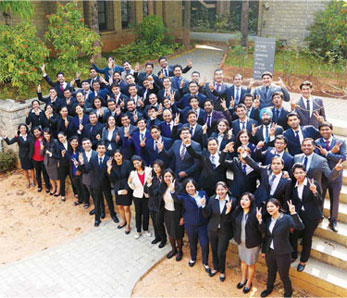
The original intent was that IIM-B would service the public sector, which in the ’70s was viewed as a very important means of delivery of economic development. But sometime in the ’90s, with liberalisation, it was clear that the future was not so much in the public sector in terms of the major chunk of economic development. Sure, I mean, the government has a major role, as a facilitator, as a regulator but actual front line commercial activity would increasingly be in the private sector, especially with liberalisation. So, Prof KRS Murthy, our director at that time, saw this and shifted the focus by dissolving the different sectoral areas that IIM-B was earlier structured as. IIM-B was structured as sectoral areas and functional areas. But he merged the sectoral areas and created one public systems group, which eventually became the Centre for Public Policy. But, more importantly, what he did at that time, was that students could come in here with a choice of sectors to specialise in. In fact, students could specialise in a sector and a function, and depending on the choice of the sector, students could also get an entry not necessarily in the pure order of merit but based on their interest in the sector and the number of seats available in each sector. Of course, many students, after they finished the programme here, did not necessarily work in the sector in terms of contributing to that sector. So, there was a conflict of objectives. Recognising all this, he did away with sector-specific entry of students and it became a general management school like IIM-A and IIM-C. That was a significant step in redirecting the institution. Ever since then, it has been on a major upswing because of the best of talent without any conflict of objectives. I think it paved the way for the institution to be more true to itself. So, that was a big shift. Of course, that doesn’t mean that IIM-B has given up its focus on public systems or as we now call it, the Centre for Public Policy, because public policy is, in any case, very critical.
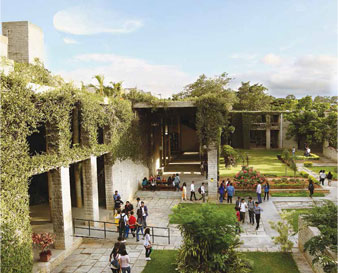
I had earlier mentioned that the role of the government is still extremely important. In fact, if you see in terms of the national budget, probably the big monies are still spent by the government, as opposed to the private sector, for economic development. So there continues to be a role for management schools to try to influence public policy and contribute towards better policy making through research.
Subsequently, sometime in early 2000, IIM-B got an opportunity to run a separate focused programme called Post Graduate Programme in Public Policy and Management (PGPPM), which the government supports to the extent that a significant number of participants in the programme actually come from the government, and in a way, are sponsored by the government because this is viewed as their coming away on duty for the year as they educate themselves in public policy and management. In fact, IIM-B started the PGPPM first and continues to offer this one-year programme. We have some star alumni who are working in the government.
Dr Hasmukh Adhia who is Revenue Secretary, Ministry of Finance, Govt. of India, Sumeet Mullick who is Chief Secretary of Maharashtra, Alok Mishra who is Senior Deputy Director at Lal Bahadur Shastri National Academy of Administration in Mussoorie, Arun Kumar Verma ho is Joint Secretary, Ministry of Power, Govt. of India, Mukesh Lal who is Joint Secretary, UPSC, Sanjeeb Patjoshi who is Joint Secretary, Panchayati Raj, Faizi O Hashmi, Secretary, Govt. of Goa, and many others.
“our students are very well-equipped to chart new territories by defining the market, defining what the service scope must be, and actually ensuring delivery. they are also equipped to be entrepreneurs”
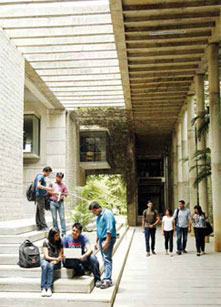
First of all, management education, the way it is delivered at IIM-B, is holistic because our focus is general management. While we cover all the functions like marketing, finance, operations, human resources management and strategy —it is all offered in an integrating manner. And that makes it holistic. As students graduate, they can identify problems, convert them into decision situations, analyse and strategise for the best quality decisions and deliver in any context. So, that is the holistic part.
The two years are a transformative experience in that the intensity of the learning experience makes each student significantly broaden their performance potential.
Then, of course, over the years, we have moved into also being more innovative. In the sense that we are saying that students must also be equipped to chart new territories of economic growth as intrapreneurs in an organisation where the organisation is taking a new direction or opening up new lines of business. Our students are very well equipped to chart new territories by defining the market, defining what the service scope must be, and actually ensuring delivery. They are also equipped to be entrepreneurs. Of course, the number of students who become entrepreneurs right at the start would not be the metric for it because, while they are exposed to what it means to have an entrepreneurial mindset, many of them — probably rightly so —work in an organised sector for a few years where they allow that entrepreneurial itch to mature and then increasingly, move into entrepreneurship. So if you take a step 10 years out of IIM-B, you would see a significant number of them moving into entrepreneurial ventures
We are in the top 20 in the Financial Times Masters in Management Global Ranking 2016 for our two-year Post Graduate Programme in Management, and in the Top 50 for our Executive Education Programme. Eduniversal has been ranking us number one every year in Central Asia for eight years now. And of course, in our own Government of India rankings, we were number one in 2016. This year, we came number two. Overall, IIM-B is pretty much at the top. Strategically, I would not want us to be only responding to ranking as each ranking has its own parameters. They give us feedback but finally we have to do what we believe in. For us, playing a significant role towards national development, towards ensuring that our students are able to contribute to the economic growth of the country and are able to contribute in socially meaningful domains, is important. So we have to do what we believe is right. And that may or may not lead us to the best of rankings.
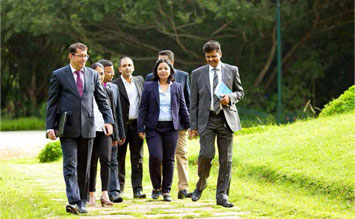
To be in the top five in the world, we have to worry about a couple of parameters. One is we need a lot more international diversity. In principle, we would like to increase our international diversity and in our own way, we are trying to put in efforts in that direction. But there are two things that arise. There is an overall India factor. Especially when I compare it with China, there are many students from Western countries or from South East Asia who when they want to go abroad for studies, would first choose North America, Europe and maybe now, increasingly, China. China seems to have caught the fancy of people in terms of a very happening place, and of course, infrastructure. The basic quality of life, especially in the urban areas, has gone up significantly and there is a certain sense of comfort in going there and studying there. I am not sure in India, at the more macro level; we have reached the same levels. Even though I would say that education within the confines of IIM-B would be very much among the top ranked institutions, but you know, there is this larger ecosystem. So that’s one reason.

Second is, we may still be able to attract students who at an entry level may come with a poorer prior performance because those who come with an excellent prior performance would still choose to go to Western countries. There may be a possibility of attracting them, but there is this issue that we have to deal with – are we giving up a seat to somebody who is of a lesser incoming quality to somebody who’s from within India, could have the same seat with a higher quality. I don’t want to say one is better than the other because there is definitely a value in having diversity. So there is a trade-off. Yes, I bring in diversity but then I am compromising on having higher incoming quality in terms of the entrance requirements of GMAT or CAT.
These are two issues, but having said that, our general direction right now is that we would like to increase international diversity. So this is one key parameter. Then there are other parameters like gender diversity. Regarding gender diversity, I must say that IIM-B has done pretty well amongst the Indian institutions though not necessarily so when compared to the top in the world. The top institutions in the world today have much better gender diversity. Now, we can be proud at 28% gender diversity but we are still nowhere near the 45- 55% that many institutions would have. At the board level, I think we are doing excellently currently —this also is a parameter used. So also, at the faculty level, we have done well. I think, among the IIMs, IIM-B would be better in terms of gender diversity but not globally, as the availability of many women academic professionals in the management domain is an issue.
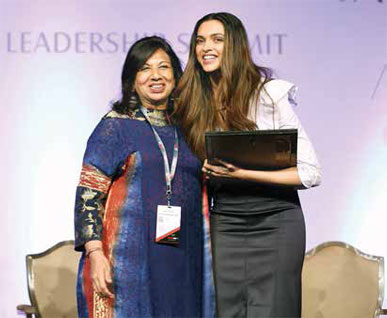
The third is that many of these rankings are also influenced by a lot of writing in by the alumni. Typically, they get a lot of assessments from alumni based on what their experience was and what their post programme career growth has been. While I have no issues about our students or our alumni post programme career growth, the culture of writing in and responding to these is still lower than probably what is required by these rankings. That’s another dimension we need to work on. The message for us is that we need to work with our alumni, get them to develop a greater sense of ownership with the institution. We must facilitate these ranking agencies to reach out to the alumni and then when they reach out to them, the alumni must respond. They must feel like they are contributing to the institute by responding. That’s the dimension we would need to work on.
The other aspect of rankings is faculty research output. There again, within the last decade we have moved in the direction of being very rigorous in our research, taking it all the way to high quality publications, which are important indicators of quality and dissemination of research. This is still cooking and we have some ways to go before we are in the global level in this dimension. But the incentive frameworks and messaging by the leadership at IIM-B have been quite clear that this direction is something that we have to take. Incentive meaning, that when somebody publishes in high quality journals, we recognise them and give them special monetary incentives to encourage them because it is a tough activity — to be focused to work with a journal, polishing up your paper, polishing up the issues you are researching, and the way it gets presented so that it goes into the journal.
“As students graduate, they can identify problems, convert them into decision situations, analyse and strategise for the best quality decisions and deliver in any context. this is the holistic part”

We believe that entrepreneurship is important in terms of economic growth in the country. It is not only about reinforcing existing organisations. You have to create new organisations, enter new domains, and have new ways of doing things.
We are very committed to entrepreneurship. We have the NS Raghavan Centre for Entrepreneurial Learning (NSRCEL). Besides, we have a required mandatory course on Entrepreneurship in our Post Graduate Programme in the first year. We encourage students who want to get into startups. If they are not comfortable with their startup, they can come back for placement. Having said this, as I already mentioned, you should understand that the entrepreneurial itch takes a while to mature. When students go to a normal organisation they see systems and processes, how things work, then they realise, yes, they can do it, they can set up all this, they understand what is required to get all that done, so that gives them confidence, and they think, hey, I have this idea, I want to try it out. So within 10 years of having worked at organisations, you may see 25% of our students moving into entrepreneurship; or, a group may get together and say, let’s start something together.
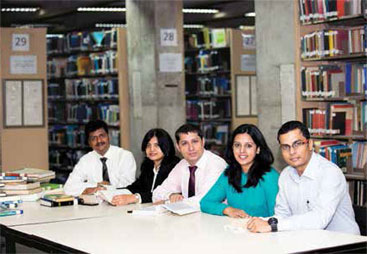
We have some very innovative programmes not only in our postgraduate programmes but also at NSRCEL. IIM-B has the Management Programme for Women Entrepreneurs (MPWE). We are currently running a programme called the Women Startup programme with Goldman Sachs. A large number of women signed up for the Women Startup programme that we launched late last year and then we filtered and funnelled them through our MOOCs (Massive Open Online Courses). They then came into our physical programme where they built on their business ideas and the quality of the idea was assessed. A significant number out of these are currently being taken through our incubation process at NSRCEL.
We collaborate in plenty of ways. There is continuous engagement. There’s NSRCEL, for example. Outside of IIM-B, a lot of the mentoring for these startups and those who are building up their ideas are by people who have been in startups who are brought in here, so there is tremendous interface. There are student projects, which students work on as part of their course, and there are independent projects. There’s the speaker series, and guest faculty in various courses. Most faculty are engaged to bring in two or more guest faculty in a course. The faculty engage with people in industry to bring them into class. That connect also helps them in their research. The faculty are very much connected with the industry in terms of assignments – consulting assignments, research assignments, case writing, etc. Then, we have a large number of Executive Education Programmes, which are entirely targeted at working executives. We also have three long-duration programmes targeted at international executives.
Our alumni, in a way, represent the industry. Alumni are also involved in our admissions process. In a way, they not only represent their sense of ownership to the institute but they also bring in the industry perspective and the practitioner perspective during the interview process. We have summer internships as part of our two-year programme. IIM-B is very much rooted in engagement with the industry on multiple dimensions.
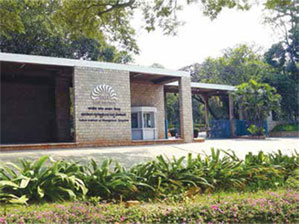
The thing about Indian institutions is that right from the beginning, they have been rooted in a strong student-oriented culture. And even to date, I’d say that the kind of attention the faculty gives to classroom delivery, to shaping the minds of the students is of a very high order in India compared to many of the schools where I have taught internationally. That’s why, from a classroom point of view, we are very much in the top.
We actively seek gender diversity. Social diversity is also there. In fact, there is no choice about that. Diversity adds value. We also have students with disability. These students actively choose IIM-B. Definitely, in an infrastructural sense, in the way the academics are administered, and the in the way is sensitivity shown to people with disability, I would say IIM-B is quite ahead.
Definitely, female students bring in diversity in perspectives. Women’s ability to see through emotional issues in any situation is definitely of a far higher order and I think that is a very important perspective. And I think just making men sensitive that women in no way are less is an important aspect. There is a sense of struggle for women, there’s the struggle to be accepted even when working in groups. Sometimes, the guys just discuss things and may not even give the women a hearing. So women have to struggle to make themselves heard.
“IIm-B has taken a leadership role in massive open online courses (MOOCS) and is very well connected with the HRD ministry that wants to propagate the course in various subjects. IIm-B is developing faculty development programmes on MOOCS which can be used by any management school”

First of all, the direction we have taken is that we will build a good research ecosystem that attracts faculty who are research oriented. We have a Young Faculty Chair, where we give them a lot of flexibility for attending conferences, for building research networks and relationships. They can spend some time abroad or invite their co-authors here. They get a salary additionally so that they don’t have to look for opportunities that we typically have in a management school that could take them away from doing research — like doing a pure consulting assignment or teaching in executive programmes which may not be directly connected with their research interests
I think the best incentive is to establish a good research ecosystem which happens automatically when more research faculty come in. For instance, now a couple of areas have started their brown bag research forum. Once a month or so, either a faculty or a doctoral student presents their research to a group of interested researchers who not only learn but also critique the work. Five years ago, I wouldn’t have thought it would happen naturally. As the ecosystem grows and strengthens, there will be enough who will find it worthwhile to attend such an event. That’s the important thing. Monetary incentives, I believe, comes second.
Sure. Younger faculty have big stakes in their career. They have more promotions to look forward to, so they will invest more time. They synergise their research with teaching. But we also need a balance. We need senior faculty who can mentor, who have the experience of publishing, the experience of teaching, and can share that.
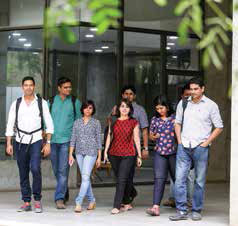
There are more in the pipeline. I think there are three values that MOOCs bring. One, it enables reaching a wider audience than just those who physically come in to do the programmes at IIM.
MOOCs have a value in funnelling into our mainstream programmes. The women entrepreneurship programme is a good example. When we announced the programme and said that we were open to any background as long as there was a bright idea, there were some 1700 responses. They first had to do a MOOC to learn the basics. I believe about 450 students completed it. Fifty of the best performers in the MOOC then moved on to the next step.
The third value of MOOCs is where it can be a complement to classroom learning. For example, we have a working executives’ diploma-granting programme called the Post Graduate Programme in Enterprise Management (PGPEM). Going forth, we may see whether we can minimise the number of visits by students to campus. Suppose a course has 20 sessions. If an equivalent of four sessions can be done through say two MOOCs of a total of 10 hours, it can reduce a certain amount of classroom requirement. The classroom time can be refocused for interpretation, analysis and application. This is what’s called a flipped classroom. You learn the basics at your pace but come to class for value- added learning like interpretation, analysis and application. What I must say is that management schools, traditionally, had flipped classes, even before MOOCs. They give students a case study, and tell them to read up at home, to preprepare, and come to class for the discussion. So MOOCs can fit the learning culture here well.
The fact is that IIM-B has taken a leadership role in MOOCs and is very well connected with the HRD Ministry that wants to propagate MOOCs in various subjects. IIM-B is developing faculty development programmes on MOOCs and creating a MOOC on MOOCs which can be used by any management school. If you want a quality MOOC, you also need quality faculty, you need a quality mind, and you need time to structure the MOOC and think it through.
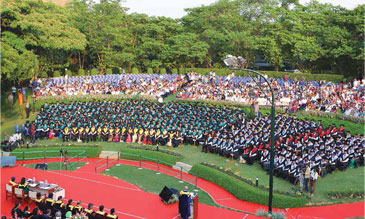
First of all, the fundamentals of our course is that of shaping young minds. We are shaping them to be learning minds, to be innovative minds. It is all deeply built into the curriculum. It is the fundamental way, our programme delivery is structured. Of course, increasingly, the emphasis on problem solving for India has come more and more in the nature of the courses, in the nature of the projects and in terms of faculty research where again, there is a thrust that we must do what is relevant and meaningful for the country, playing a role in the selection of such projects. In that sense, we are gearing them to roles where they can contribute to Indian needs. As to making leaders of them, that goes back to our DNA. Because it is not just about executing in a place where there are good systems. That is being more like an executive. Then you move up to where you yourself are creating systems. But that may still be a manager. Then you are completely breaking new ground and looking at new ways of doing things. You are enabling a whole bunch of people to fall in line in that direction. That is the leadership part. Also, at IIM-B, students themselves organise a series of big events. The Speaker Series, Vista, Eximius, Prayaas, Unmaad are all big events where students go through the process of sourcing funds and speakers, and high quality organisation. All of these add to the characteristics required to become a leader.
By Geetha Rao